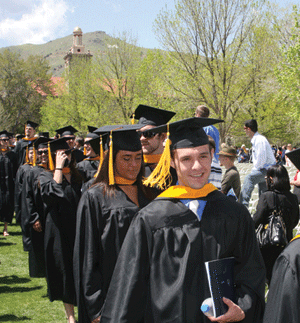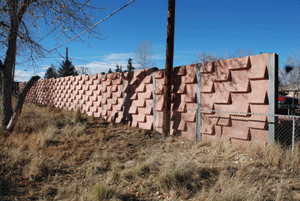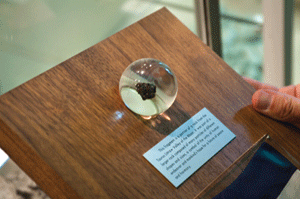Some day children with growth plate injuries could avoid deformities, children with cystic fibrosis could have better treatments, and children with birth defects could grow new bone, thanks to a new collaboration between the Colorado School of Mines Office of Research and Technology Transfer and the Children’s Hospital Colorado Research Institute.
Launched in early 2013, the co-funded Children’s Hospital Colorado, University of Colorado/Colorado School of Mines Collaboration Pilot Awards provide seed grants of up to $20,000 to promote teamwork and generate preliminary data for larger grants from the National Institutes of Health. In March, the first recipients of these seed grants were announced:
Melissa Krebs, an assistant professor of chemical and biological engineering at Mines, and Karin Payne, an assistant professor of orthopedics at the University of Colorado Denver, are developing an injectible, sustained-release biomaterial system to promote normal healing of growth plate injuries. The growth plate is a region of cartilage at the end of children’s bones that provides the signals for lengthening as children grow. However, trauma to the growth plate can cause abnormalities and uneven growth. Krebs and Payne are developing a means of depositing growth factors at an injury site that could heal such injuries before they cause abnormal growth. Krebs’ role is designing a delivery system, a hydrogel containing tiny, biodegradable polymer microspheres that carry growth factors. She envisions how it might one day be used: “The patient comes in and is diagnosed with a growth plate injury and the physician can take a ready-to-go syringe out of the fridge and inject it.”
Keith Neeves, assistant professor of chemical and biological engineering at Mines, will team up with Shama Ahmad, a pediatrics researcher at the University of Colorado, to study cystic fibrosis (CF) by creating ‘lungs on a chip,’ made up of tiny pathways colonized with cells, some chips with healthy lung cells and some with lung cells from CF patients. Tiny plugs of mucus passing through the chips will simulate the excessive coughing of CF patients, which can damage lung cells and inhibit breathing. Ultimately, Neeves’ microsystem-based, lung models will be used to test new CF treatments.
Steve Boyes, associate professor of chemistry at Mines, and Sven-Olrik Streubel, an otolaryngolost from Children’s, are developing next-generation polymer scaffolds, upon which to grow new bone. Doctors have traditionally used bone from other regions of the body, or from cadavers, to repair malformations. As an alternative, Boyes’ lab is working on a strong, moldable polymer scaffold, infused with peptides and bone growth factors, that eventually biodegrades, leaving healthy bone in its place. “It’s a long way off,” he stresses. “But in children with congenital birth defects in their jaw, we could take a mold of what the surgeon wants to put in there, design a polymer to look like that mold and implant it so it grows bone, and they could grow a normal facial structure.”





